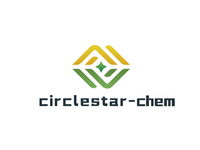Product Name: 1-(3-Dimethylaminopropyl)-3-ethylcarbodiimide hydrochloride
Synonyms: (3-dimethylaminopropyl)ethyl-carbodiimidmonohydrochloride;3-propanediamine,n’-(ethylcarbonimidoyl)-n,n-dimethyl-monohydrochloride;1-(3-Dimethylaminopropyl)-3-ethylcarbodiimide hydroc;AT test ,only COA;EDC.HCI;N'-(Ethylkohlenstoffimidoyl)-N,N-dimethylpropan-1,3-diaminmonohydrochlorid;Avanafil Impurity 40;Diquafosol Impurity m
CAS: 25952-53-8
MF: C8H18ClN3
MW: 191.7
EINECS: 247-361-2
Product Categories: Aliphatics;straight chain compounds;Peptide Coupling Reagents;Biochemistry;heteroXlink;EDC;Condensation & Active Esterification;Coupling Reactions (Peptide Synthesis);Peptide Synthesis;Reagents for Oligosaccharide Synthesis;Synthetic Organic Chemistry;Peptide;Amine;Zero-Length Crosslinker;peptides;25952-53-8;top
EDC hydrochloride is a water-soluble derivative of carbodiimide useful for conjugating haptens to proteins and polypeptides. Used to modify NMDA receptors and as a condensing agent in peptide synthesis. The major advantage of EDAC coupling is the easy removal of excess reagent and the corresponding urea by washing with dilute acid or water. Carbodiimides catalyze the formation of amide bonds, carboxylic acids, and amines by activating the carboxylate to form an O-acylurea. This intermediate can be attacked by an amine directly to form an amide. EDAC is released as a soluble urea derivative.

 China
China





